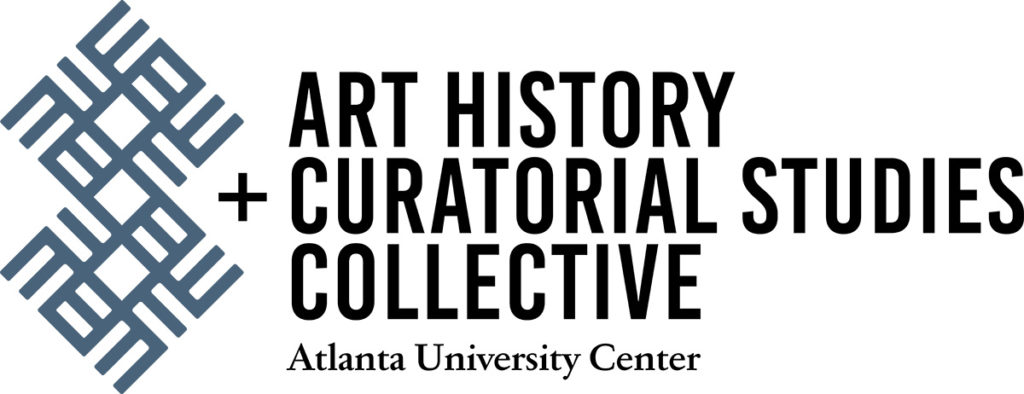
The rich history of the visual arts at Spelman dates back to the 1930s, when internationally acclaimed artists Hale Woodruff (1900 – 1980) and Nancy Elizabeth Prophet (1890 – 1960) came to Atlanta and established the visual arts program in the Atlanta University Center. Over the course of several decades, faculty in the Department of Art & Visual Culture including Jenelsie Walden Holloway; Dr. M. Akua McDaniel, and Dr. Arturo Lindsay established a tradition of preparing students for museum professions through mentoring and focused guidance.
Launched in 2015, the Curatorial Studies Program builds upon this faculty-driven legacy and is among the Museum’s most significant achievements and efforts in recent years. This program, which was created by the Museum and the Department of Art & Visual Culture and made possible by an award from the Andrew W. Mellon Foundation, was created to cultivate and develop the next generation of museum curators. It formalized the College’s emphasis on the visual arts and aims to, over time, address the lack of diversity in the museum field.
The Curatorial Studies program affords the opportunity to:
As museums and other institutions have begun to dedicate greater attention to diversity, equity, and inclusion, the Curatorial Studies Program provides a groundbreaking model for the education of Black curators and museum professionals. In 2019, Spelman President Mary Schmidt Campbell, PhD, and Spelman Museum director Andrea Barnwell Brownlee, PhD, were invited to participate in the Keynote Conversation at the Annual Conference of the Association of Art Museum Curators. In this video, they discuss the legacies of historically Black museums such as the Studio Museum in Harlem — where Campbell served as director from 1977 to 1987 — and the changes the contemporary art world has undergone in the past forty years.
Several recent graduates from Spelman College and Morehouse College who participated in the pilot initiative are among the program’s earliest success stories. While some are currently in graduate programs in art history, museum studies, and Pan-African Studies, others are working in curatorial or education departments in prestigious museums. In this video, Kéla Jackson, C’2019 — currently a graduate student in the Department of Art History and Architecture at Harvard University — shared her academic and professional objectives, which were in large part shaped by her involvement with the Curatorial Studies Program.
Jayson Overby, Morehouse C’2017, another participant in the Curatorial Studies Program, is currently a Curatorial Assistant in the Contemporary Art Department at Crystal Bridges Museum of American Art. In a conversation with Kéla Jackson, he recently discussed the impact that the program had on his academic and professional interests in this video.
A major award from the Walton Family Foundation has enabled the College to expand its emphasis on art history and curatorial studies, building a stronger infrastructure for these specialized disciplines. In 2018, Spelman established the Atlanta University Center Art History + Curatorial Studies Collective, an exciting initiative that emphasizes a variety of art-focused careers including work in art conservation and commercial galleries, among others. Enrolling students from Clark Atlanta University, Morehouse College, and Spelman College, this innovative curriculum seeks to shape the future of art history and position the Atlanta University Center as the leading incubator of African American museum professionals. Please see the AUC Art Collective’s website to learn more.
To inspire and enrich the Spelman College community and the general public primarily through art by and about women of the African Diaspora.
Mailing address:
350 Spelman Lane, Box 1526
Atlanta, GA 30314 29201
Phone: 404.270.5607
Email: museum@spelman.edu
February 2 – May 24, 2024
Wednesday – Saturday
12pm – 5pm
The Museum is Closed Sundays, Mondays, Tuesdays, Holidays and Spelman campus breaks.